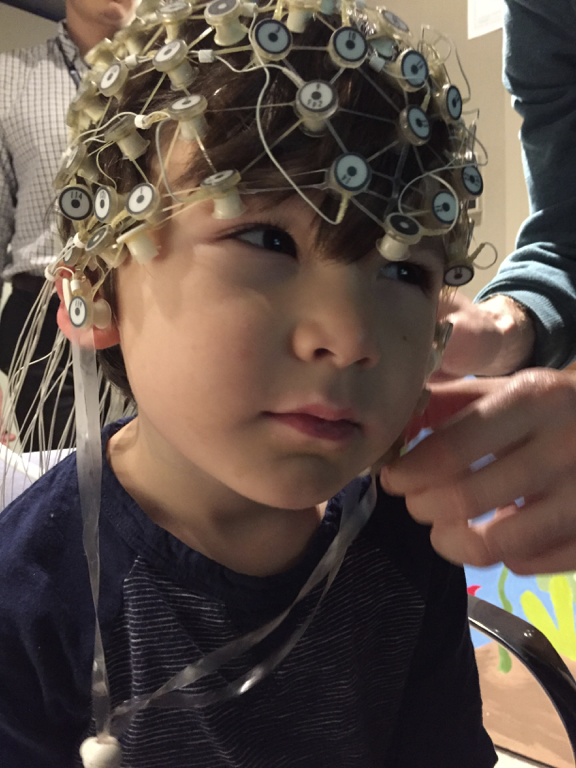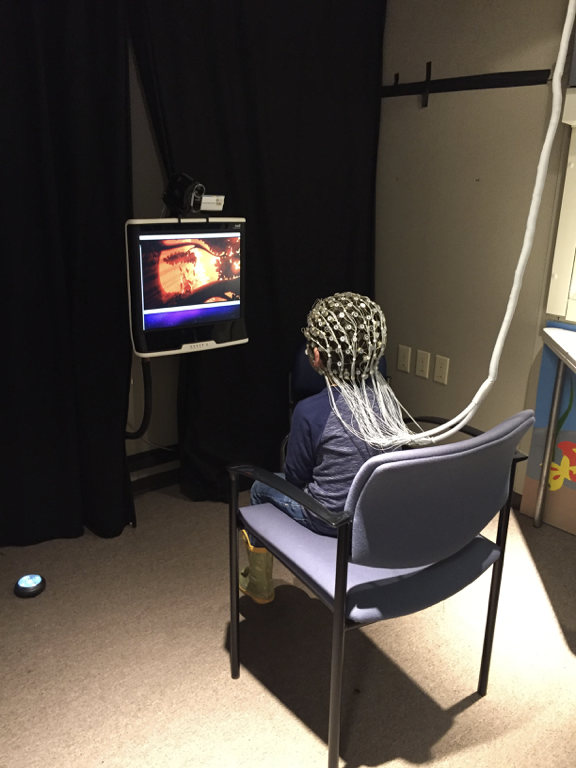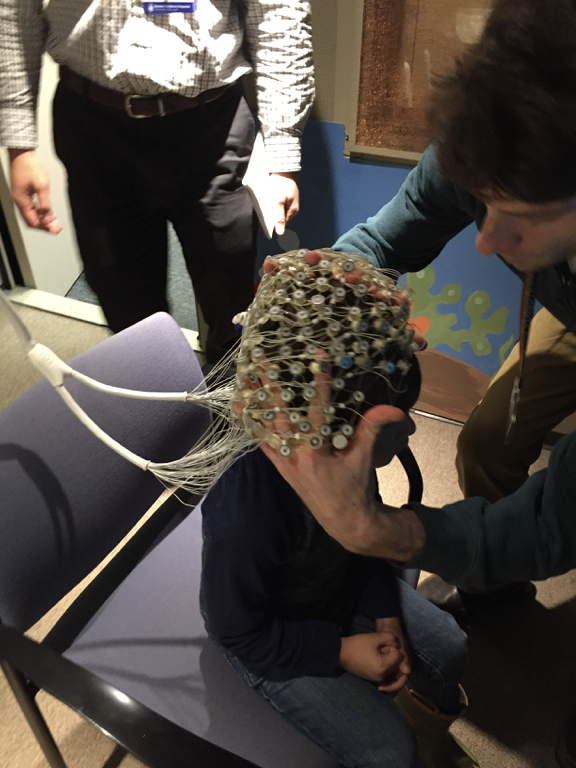Clinical Study of Non-Invasive EEG for Children Ages 2-7
Principal Investigator
FRAXA Fellow
Boston, MA
With support from The Pierce Family Fragile X Foundation and the Autism Science Foundation.
Summary
With a $90,000 award from FRAXA Research Foundation, Dr. Carol Wilkinson, MD PhD is recruiting children between the ages of 2 and 7 years with Fragile X syndrome to participate in a study at Boston Children’s Hospital. Dr. Carol Wilkinson and her team are investigating how differences in brain activity can affect learning, language, and behavior in individuals with Fragile X syndrome.
Thanks to several donors travel stipends of up to $500 dollars are available. Book your trip to Boston this spring and ride the swan boats afterwards!
Please contact Dr. Carol Wilkinson at FXSNeuralMarkers@childrens.harvard.edu or (857) 218-4779 for more information or to enroll in this study.
The Results
Thanks to a FRAXA-funded grant, Dr. Carol Wilkinson and her team are continuing to investigate how differences in brain activity can affect learning, language, and behavior in individuals with Fragile X syndrome. The team is currently recruiting for two clinical studies which use EEG and behavioral tests.
The team's first results, Increased aperiodic gamma power in young boys with Fragile X Syndrome is associated with better language ability, were published in Molecular Autism on February 25, 2021.
The Next Steps
Dr. Wilkinson shared, “Because of data collected from the FRAXA supported study, I was able to receive an NIH award to fund a new project.” The team is continuing to recruit boys and girls with FXS for our original FRAXA-funded project and now also have an NIH funded project (BRIDGE study) that will similarly do EEG and behavioral assessments but in a smaller age range (2-5 year old boys). There are 2 visits a year apart. Dr. Wilkinson and her team are analyzing the data now and anticipate publishing their results soon.
The Science
What is Involved in Participating?
A single 4 hour visit to Boston Children’s Hospital will be scheduled at the family’s convenience, including weekends, and siblings will be allowed to accompany the family. This visit includes clinical and behavioral assessment that can evaluate a child’s thinking, motor skills, language skills, and social communication. The study will also measure participant’s brain activity using electroencephalography (EEG).
EEG is a safe and radiation free way to measure brain activity in response to different sounds and pictures. The EEG evaluation rooms, themed Jungle, Mario, Aquarium and Farm, are quiet, with comfy couches in the outer rooms. In Wilkinson’s studies, there is an EEG cap, like a hair net with imbedded buttons and a chin strap to hold it on snugly. The child sits on a parent’s lap on a chair and is assisted by a research assistant while another researcher collects the data.
Families will receive a small toy and $25 for participating. Free parking and child care for siblings are also provided.
During the EEG recordings, Wilkinson breaks stimuli down into simple tasks, looking at brain responses to visual and auditory tests compared to a resting situation. The visual tests involve looking at checkerboards with reversing patterns, and the auditory stimuli are beeps with varying frequencies, very similar to hearing tests. This is why the EEG room looks so much like an audiology lab. While the children look and listen, data is collected.
Why this Study?
Enabling Future Clinical Trials: Noninvasive EEG to Find Neural Markers of Fragile X
EEG is a simple, non-invasive technique that can identify differences in the patterns of brain activity. EEG-based neural markers may also predict specific challenges, like speech delay or behavioral problems. Once neural markers are found for particular challenges, such as kids with poor language versus good language, those markers can be measured during drug and behavioral therapy trials to see if a child is improving based on objective biological readouts. This would be enormously helpful in determining whether or not a treatment is truly working.
There is an enormous need for good objective measures – biomarkers – for treatment trials in Fragile X syndrome. This study will test whether electroencephalography (EEG) can identify useful neural markers (biomarkers for the brain).
The study provides no benefit to the children who participate, but if it results in reliable neural markers, the Fragile X field will have a powerful and safe tool to assess treatments in upcoming clinical trials. Wilkinson says “given that a large number of children with Fragile X have autism, we hope that some of the same neural markers we find in Fragile X will also translate to a subset of children with autism. If there are therapies that work in Fragile X, then we could identify kids with autism or other neurological disorders with a similar EEG profile who could be helped by the same therapies or drugs.”
“In mouse models of Fragile X many drugs show promise but then have failed in clinical trials. This is not necessarily because they don’t work well, but rather that they may only be effective in a subset of the population, and then don’t demonstrate a positive outcome when averaged together,” explains Wilkinson. If we can determine what distinguishes one brain from another, and if a drug works with a particular neural marker or set of neural markers, this would permit matching drugs based on objective biological markers, a personalized medicine approach, rather than defaulting to the current method of trial and error.
Additional Insight into this Clinical Study of EEG
We published Neural Markers of Fragile X: A Powerful New Tool for Clinical Trials which gives further insight into this clinical study and the benefits from it.
If you are interested in this study, Dr. Carol Wilkinson has created a social story to help explain it to your child.
For more information or to enroll in the study, please contact Dr. Carol Wilkinson at FXSNeuralMarkers@childrens.harvard.edu or (857) 218-4779
Grant Post Revisions
- 2022/03 - The Results and The Next Steps updated.
- 2021/03 - Trial will resume in Spring/Summer 2021, details will be added then.
- 2021/02 - First Results Published in Molecular Autism.
- 2019/04 - Interview Added.
- 2017/09 - Original grant post published.




